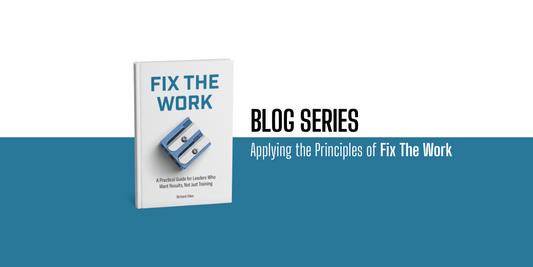The Effectiveness Gap: Why Most Efforts Fall Short
Richard SitesShare This Post
Every leader has been there. You launch a new initiative, maybe training, a toolkit, or a culture program, and everyone expects it to solve the problem. On paper, it looks like the answer. The budget gets approved, the project moves forward, and the team gets busy.
Then the results come in, and the impact is underwhelming. People still struggle. The problem is not fully solved. Leadership asks what went wrong.
That gap between expectation and outcome is not a surprise. It is the Effectiveness Gap.
What is the Effectiveness Gap?
The Effectiveness Gap is the difference between what leaders expect an initiative to achieve and what it actually delivers. It is not random. It is predictable. Every intervention, no matter how well-designed, has limits.
The Effectiveness Gap is built in because two factors are almost always in play:
-
Problem clarity
If the problem is not defined precisely, the solution will miss the mark. Many projects start with a vague sense of the issue: “performance is low,” “engagement is slipping,” or “managers need accountability.” Without clear definition and measurable outcomes, the effort is already compromised. -
Solution clarity
Even when the problem is nailed down, the chosen solution might not be capable of producing the change that is expected. Training cannot fix a broken workflow. A culture campaign cannot replace consistent leadership behavior. A toolkit cannot enforce accountability. The fit between solution and problem matters as much as the effort put into delivery.
Together, these two factors create a predictable reduction in impact. Leaders expect a complete fix. What they actually get is partial progress.
A Real-World Example in Business
A software company wanted to improve onboarding for its customer success team. The goal was simple: get new hires supporting clients by week two. Instead, the project ballooned. The team built a multi-phase curriculum, created detailed scenarios, and ran every draft through layers of review. Six weeks later, the program was still not live.
By then, hiring had slowed, and the original urgency was gone. The company spent more than $40,000 on a program that never launched. A new manager finally asked a different question: “What can someone actually do by day three?”
The team scrapped the overbuilt curriculum and created a one-page job aid with three short videos. It cost less than $2,000 and went live in a few days. New hires were handling tickets by the end of their first week.
The first version failed because of the Effectiveness Gap. The problem was not clearly defined and the solution was overbuilt. The second version worked because it targeted a realistic outcome and filled the gap with speed and clarity.
A Real-World Example in Medicine
The term Effectiveness Gap also shows up in healthcare. In clinical research, doctors often see a difference between how well a treatment works in controlled trials and how well it works in real-world practice. This is sometimes called the efficacy-effectiveness gap. For example, a cancer drug may show strong results in a trial but deliver shorter survival rates once patients begin using it outside the study environment.
Researchers use the concept of the Effectiveness Gap to remind both doctors and patients that no treatment solves everything. What looks effective in theory does not always translate cleanly in practice. The same is true for organizations. Programs that look strong in a strategy deck or pilot test often deliver less impact once they hit real conditions.
Why Leaders Should Care
The risk is not that the Effectiveness Gap exists. The risk is ignoring it. When leaders assume a single program will fully solve a complex issue, they set up their teams for disappointment. This leads to frustration, wasted resources, and declining trust in future initiatives.
By acknowledging the Effectiveness Gap at the start, leaders can:
- Set realistic expectations about what an initiative can accomplish
- Budget and plan for the progress it will realistically deliver
- Identify what additional actions will be needed to close the rest of the gap
The Better Questions
Instead of asking “Will this solve it completely?” the more useful questions are:
- What measurable progress will this deliver?
- What is a reasonable cost and timeline?
- Are there simpler or better solutions already available?
- What else must we do to close the remaining gap between what this initiative achieves and what the business needs?
Why HR and L&D See It First
People teams run into the Effectiveness Gap more than most. They are often asked to fix problems that belong to leadership, process, or workflow. A course gets requested when the real issue is unclear expectations. A toolkit gets built when the real issue is missing sponsorship. HR and L&D end up owning the disappointment when the effort does not match the expectation.
Recognizing the Effectiveness Gap helps these teams reframe the conversation. Instead of promising a full solution, they can define where the initiative will help and where it will not. That clarity protects their credibility and creates space for broader fixes.
The Bottom Line
The Effectiveness Gap is not a failure. It is a fact of work. No initiative solves everything. The key is being honest about how far a solution will take you and planning for the rest.
Leaders who understand this avoid the trap of overbuilding, overspending, and overpromising. They ask sharper questions, set clearer expectations, and combine interventions with other actions to reach the outcome they need.
The real question is not “Will this fix it?”
The real question is “What progress will this deliver, and what else must we do to finish the job?”




